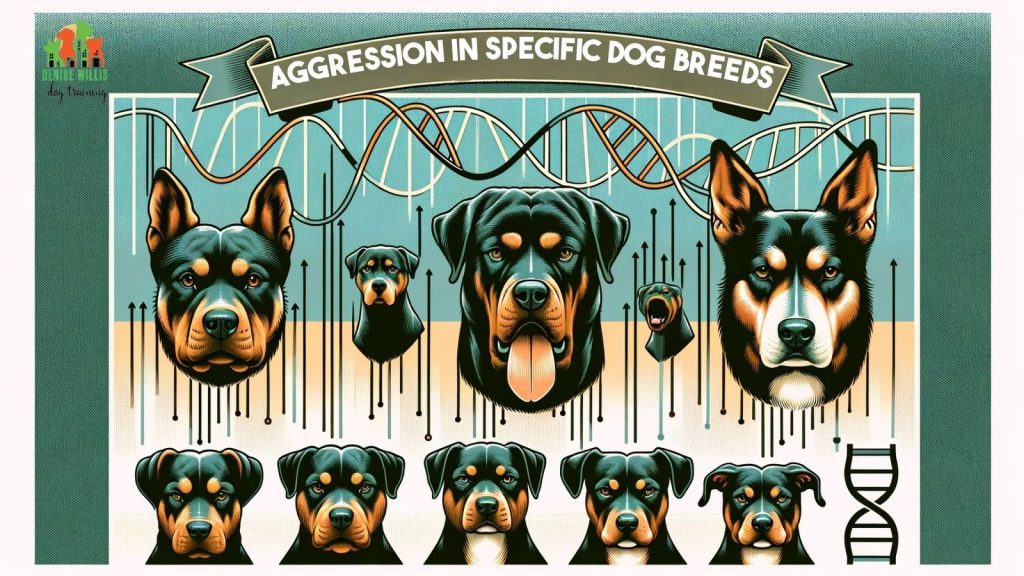Positive Training Techniques for Dogs of Various Breeds A Guide

Unlocking the Potential of Your Canine Companion
Training your dog can open a world of understanding and joy for both you and your furry friend. Utilizing positive training techniques not only fosters a harmonious relationship but also enhances their natural instincts and behavior. Regardless of breed, every dog can benefit from a tailored approach to training. This journey not only improves the well-being of your dog but also enriches your experience as a pet owner.
Why Choose Positive Training?
Positive reinforcement is a method grounded in rewarding desired behaviors rather than punishing unwanted ones. Here are some compelling reasons to consider:
- Builds Trust: Fostering a bond of trust and respect between you and your dog lays the foundation for a healthy relationship. When your dog feels secure, they are more willing to learn and explore their environment.
- Improves Behavior: Encouraging good behavior while discouraging bad habits gently leads to a well-mannered companion. For instance, rather than scolding your dog for barking, rewarding them for being quiet can lead to better long-term results.
- Enhances Learning: Dogs learn quicker when they associate training with rewards. This can be treats, praise, or playtime. Understanding what motivates your dog can significantly expedite their training journey.
This guide will delve into various positive training techniques tailored to fit different breeds, addressing their unique characteristics and needs. Understanding your dog’s breed-specific traits can be the key to effective training outcomes. For example, a high-energy breed like the Australian Shepherd may require more vigorous exercise and stimulation compared to a more relaxed breed like the Basset Hound.
Exploring Breed-Specific Strategies
From energetic Border Collies to gentle Bulldogs, each breed has its quirks. Learning to implement effective training methods can substantially improve:

- Obedience: Commands like “stay,” “sit,” and “come” are essential for communication and safety. For instance, consistently rewarding your Labrador Retriever when they come to you can lead to them responding promptly in critical situations.
- Socialization: Early exposure to various people, environments, and other animals is crucial to developing a well-adjusted dog. Engaging with a community dog park not only benefits your dog’s social skills but also provides an opportunity for you to meet fellow dog lovers.
- Problem Solving: Addressing issues like separation anxiety or fear of loud noises requires patience and understanding. Techniques such as gradual desensitization can help reduce your dog’s anxiety by slowly exposing them to the source of their fear in a controlled manner.
Join us as we explore the fascinating world of positive training techniques, ensuring you unleash the best in your dog—no matter the breed. Remember, your dog is a reflection of your training efforts, and with the right strategies, you can create a peaceful, loving, and fulfilling environment together.
CHECK OUT: Click here to explore more
Understanding Your Dog’s Unique Needs
Before diving into specific positive training techniques, it’s essential to comprehend the unique characteristics and behavioral traits of different dog breeds. Each breed has its genetic predispositions that can significantly influence their learning capabilities, energy levels, and interactions with humans and other animals. For instance, a breed known for its intelligence, such as the Border Collie, often thrives when its cleverness is engaged in training activities, while a more laid-back breed, such as the Pug, may prefer a gentler and less demanding approach.
As a dog owner, recognizing these differences is crucial. Here’s a closer look at some general traits across various breeds that can help shape your training methods:
- Energy Levels: Breeds like Australian Shepherds or Jack Russell Terriers often require extensive physical and mental stimulation to stay balanced and happy. Training sessions for such active breeds should incorporate high-energy activities that channel their enthusiasm into productive behaviors.
- Temperament: Some breeds, such as Golden Retrievers, are generally eager to please and respond enthusiastically to praise and rewards. In contrast, more independent breeds, like Chow Chows, may exhibit stubborn tendencies, necessitating a patient and consistent approach to training.
- Sociability: Breeds like Labrador Retrievers are typically social and enjoy interacting with people and other dogs. In training, leveraging positive reinforcement in social situations can enhance their skills and ensure a well-mannered companion.
Implementing Positive Reinforcement
The cornerstone of effective training lies in positive reinforcement. This method involves rewarding your dog when they exhibit desired behaviors, encouraging them to repeat these behaviors in the future. Here are some practical tips on how to successfully implement positive reinforcement:
- Consistency is Key: Whether you are teaching a Beagle to sit or an Afghan Hound to stay, applying the same commands and rewards consistently will strengthen their understanding and obedience.
- Timing Matters: Deliver rewards immediately after your dog performs the desired action. This immediate feedback helps your canine associate the behavior with the reward, whether it be a treat, verbal praise, or a favorite toy.
- Vary the Rewards: Different dogs may respond to various forms of motivation. Experiment with different rewards, such as treats, toys, and affection, to determine what excites your dog the most. This variation keeps training engaging and enjoyable for your companion.
By truly understanding your dog’s breed-specific traits and employing a solid foundation of positive reinforcement techniques, you set the stage for a fruitful training experience. This journey not only serves to enhance obedience and reduce behavioral issues but also builds a lasting bond between you and your furry friend that can withstand the test of time.
| Training Method | Advantages |
|---|---|
| Clicker Training | Strong positive reinforcement encourages desired behaviors, providing clear communication between you and your dog. |
| Reward-Based Training | Utilizes treats or toys, enhancing your dog’s motivation to learn and improving their emotional well-being. |
| Socialization Techniques | Promotes confidence while reducing fear and aggression, especially vital for various breeds with different temperaments. |
| Obedience Training | Establishes a solid foundation for good behavior, creating a strong bond of trust and respect between owner and dog. |
Understanding various positive training techniques can transform your dog’s behavior, making training a fulfilling experience for both you and your furry friend. Clicker training, for instance, capitalizes on the power of immediate reinforcement, while reward-based training not only makes learning fun but also nurtures your dog’s emotional health. Additionally, socialization techniques are crucial in teaching dogs to adapt to various situations, which can mitigate stress and anxiety. Compliance and success in obedience training foster an environment where commands become a shared language of trust. Each method offers distinct advantages tailored to a dog’s breed and personality, promising a more harmonious relationship. As you delve deeper into these techniques, you’ll acquire invaluable insights to refine your training approach and bond with your dog like never before.
CHECK OUT: Click here to explore more
Tailoring Techniques for Different Breeds
Having laid the foundation with a comprehensive understanding of your dog’s unique needs and the principles of positive reinforcement, it’s time to explore how to apply these techniques effectively across various breeds. Dogs possess distinct learning styles based on their inherent traits, making it essential to customize training approaches for optimal results.
Engaging High-Energy Breeds
When dealing with breeds known for their vigor, such as the Border Collie or Belgian Malinois, creating an active training environment is critical. These dogs may quickly lose interest in conventional training sessions, so incorporating elements that match their intense energy is paramount. Here are a few strategies:
- Incorporate Agility Training: Activities like jumping, weaving, and running tunnels can keep high-energy dogs engaged while simultaneously honing their focus and obedience. Agility classes not only provide physical exercise but also mental stimulation.
- Use Interactive Games: Playing fetch with variations, such as frisbee or tug-of-war, can reinforce commands while satisfying their instinct to chase and retrieve. Adding new tricks during these games can make training enjoyable for both you and your dog.
- Frequent, Short Sessions: Rather than long training periods, opt for short, dynamic sessions to keep their attention. Aim for 5-10 minutes of high-intensity practice followed by a playful break to reset their focus.
Working with Independent Thinkers
For breeds like the Shiba Inu or Bulldog, which often exhibit strong-willed or stubborn behaviors, patience is essential. These dogs tend to think independently, so conventional training methods may not always yield the desired results. Adopting the following strategies can facilitate a more effective training experience:
- Engage in Clicker Training: This method employs a clicker to mark specific behaviors that you want to encourage. By pairing the sound of the clicker with a reward, you create a clear association between actions and positive outcomes, which can motivate these independent breeds.
- Solve Puzzles: Mental exercises, such as puzzle toys where dogs must figure out how to access treats, can tap into their problem-solving skills. This approach not only keeps them entertained but also reinforces positive problem-solving behavior.
- Make Training Relevant: Independent dogs often respond better when they see the purpose behind commands. Incorporate real-life scenarios, such as teaching them to wait at the door or stay while you prepare their meals, to bridge the gap between training and practical application.
Enhancing Sociability in Friendly Breeds
Conversely, breeds like Golden Retrievers and Labrador Retrievers, which thrive on social interaction, can benefit greatly from group training settings. Here’s how to leverage their sociable nature:
- Utilize Group Classes: Enrolling your sociable dog in group classes helps them learn commands while interacting with other dogs. The presence of fellow canines provides distractions and encourages them to focus amidst stimulation.
- Socialization Opportunities: Frequent playdates with other dogs can reinforce behavioral skills and promote calm, positive interactions with various breeds. Surrounded by different temperaments, your dog will learn to adapt their behaviors appropriately.
- Reward with Social Time: Use their affinity for social interactions as a reward. Allowing them to play or enjoy quality time with you or other dogs after they successfully perform a task can enhance their training enthusiasm.
By tailoring positive training techniques to resonate with each breed’s behavioral traits and inclinations, you can cultivate a harmonious bond with your furry companion while fostering a well-adjusted and obedient pet. This method not only enriches their lives but also deepens the connection you share with your dog, making the journey of training an enjoyable adventure.
CHECK OUT: Click here to explore more
Conclusion
In this comprehensive guide on positive training techniques for dogs of various breeds, we’ve explored how understanding your dog’s unique temperament can significantly enhance their training experience. The cornerstone of effective training lies in recognizing that all dogs are not created equal; each breed comes with its own inherent traits and tendencies that shape how they learn and interact with the world around them.
From high-energy breeds that thrive on agility and interactive games, to independent thinkers who require patience and mental challenges, and finally, social breeds craving interaction and group dynamics, tailoring your approach is crucial. By utilizing strategies that align with these traits, not only do you foster behavioral improvements, but you also enrich the emotional bond between you and your furry friend.
The journey of training your dog should be as enjoyable as it is educational. Incorporating elements of play, variability in training environments, and rewarding positive behaviors all contribute to a nurturing training atmosphere. Furthermore, continual learning through resources, local training classes, or online communities can enrich your knowledge and relationship with your dog. As you embark on this rewarding journey, remember that each training session is not just about teaching commands, but also about building a foundation of trust, respect, and love that will last a lifetime. Explore new methods and embrace the individuality of your dog; the results will surely pay off in a lifelong companionship full of joy and obedience.



